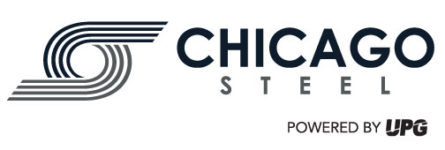Other Metals
Aluminized
Aluminized is carbon steel that has been hot dipped coated on both sides with an aluminum-silicon alloy. Through the hot dipped process, the steel has improved corrosion resistance and has a unique combination of both carbon steel and aluminum. There are two types of aluminized steel; type 1 contains 5%-11% silicon to promote better adhesion to the steel itself and is intended for applications such as mufflers, furnaces and water heaters. Type 2 is hot dipped coated with commercially pure aluminum and found in applications such as grain bins and drying ovens.
Aluminum
A lightweight, durable alternative to carbon steel, aluminum is a sustainable, highly recyclable metal. With a high strength-to-weight ratio, manufacturers can take weight out of applications while maintaining the same strength properties as heavier gauge steel. Aluminum is bought to a specific alloy and temper – common ones include 6061-T6 and 7075-T6. You’ll find aluminum in a variety of industries such as aerospace and automotive. Aluminum comes in flat roll, bar tube beams and more.
Cold Rolled Full Hard
Cold rolled full hard steel is produced the same way as traditional cold rolled steel. Slabs are cooled to room temperature before being rolled and processed. When complete, traditional cold rolled is then annealed to make the steel more formable. With full hard, the cold rolled produced is not annealed, making it highly work-hardened and often contains residual cold mill oils on the sheet surface. In sheet form, the product meets ASTM A568.
Galvalume
Galvalume steel is hot dipped carbon steel with an aluminum-zinc alloy coating that is 55% aluminum and 45% zinc with a small amount of silicon. Like galvanized steel, the galvalume coating is “sacrificial” – which means the galvalume coating the steel will corrode, thus protecting the base layer carbon steel. It gives steel a long-term resistance to atmospheric corrosion and retains a bright surface appearance even through long-term exposure to the elements. Galvalume is often found in metal roofing applications.
Hot Rolled Pickled & Oiled
The pickling process removes surface oxides from metals via a chemical reaction. Steel is placed into an acid bath that removes the scale jacket and leaves a clean surface for further process. This oil that is used to treat the surface of the steel helps to prevent corrosion during the shipping and storage. The pickling process helps to remove impurities such as stains, inorganic contaminates and scale.
Painted Products
Pre-painted steel products are carbon sheet steel that is produced with a direct application of paint onto the steel coating line. Before the material can be painted, it is primed to ensure the paint properly adheres to the steel itself. Painted products help to improve the corrosion resistance of steel, and adds the beauty of crisp, painted exterior that is pleasing in appearance. Today’s painted coils are computer controlled to ensure paint thicknesses are uniform and of high quality.
Stainless Steel
Stainless steels are most notable for their high corrosion resistance. Stainless is a steel alloy with a minimum of 11% chromium and a maximum of 1.2% carbon. Corrosion resistance can be raised through the increase of chromium. Stainless steel is used in a wide variety of industries including aerospace, medical, appliances and food processing plants. Common stainless steel grades include 304, 316, 409 and 416.
